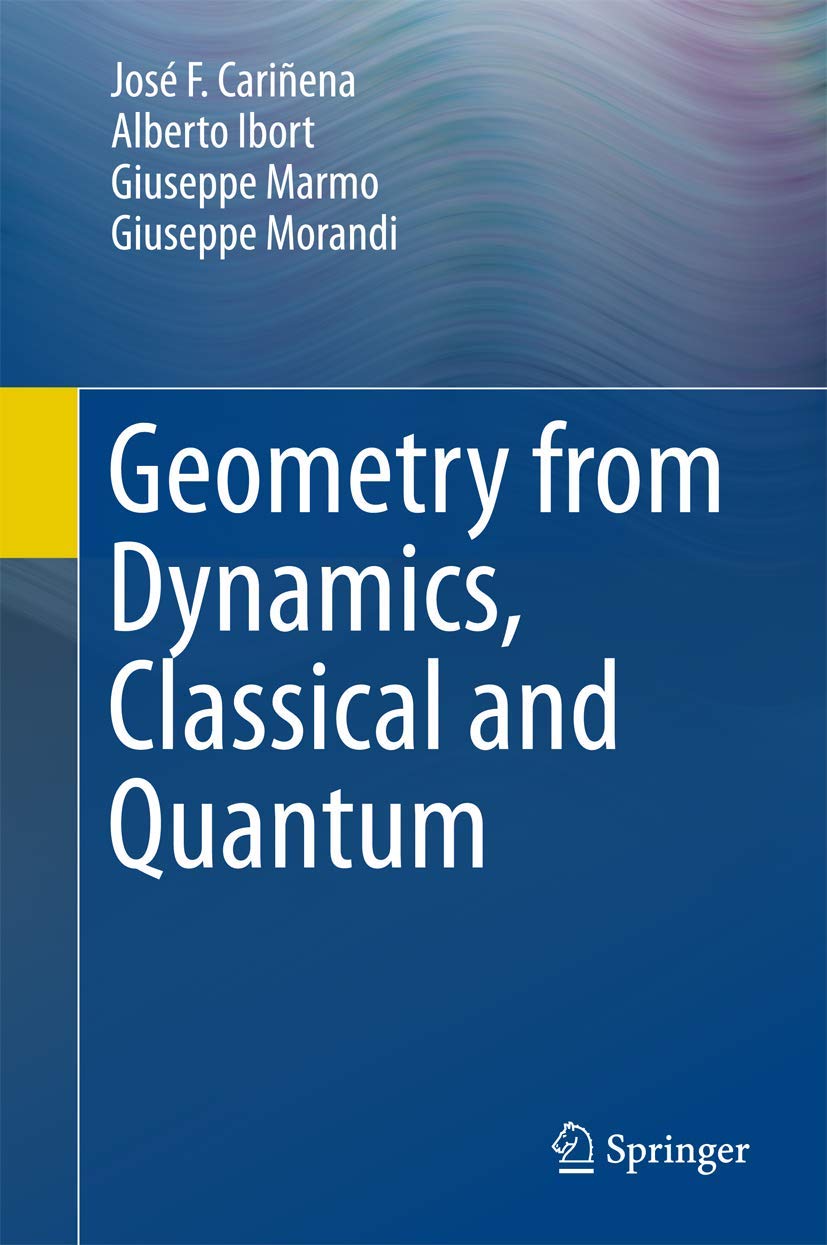Geometry from Dynamics, Classical and Quantum
Geometry from Dynamics, Classical and Quantum is backordered and will ship as soon as it is back in stock.
Couldn't load pickup availability
Genuine Products Guarantee
Genuine Products Guarantee
We guarantee 100% genuine products, and if proven otherwise, we will compensate you with 10 times the product's cost.
Delivery and Shipping
Delivery and Shipping
Products are generally ready for dispatch within 1 day and typically reach you in 3 to 5 days.
Book Details
-
Author: Jos F. Cariena
-
Brand: Springer
-
Edition: 2015 ed.
-
Binding: Hardcover
-
Number of Pages: 628
-
Release Date: 08-10-2014
-
ISBN: 9789401792196
-
Package Dimensions: 9.4 x 6.4 x 1.9 inches
-
Languages: English
About the Book
Geometry and Dynamics: From Classical to Quantum presents an in-depth study of the fundamental geometrical structures used in both classical and quantum physics. It approaches these structures—such as symplectic, Poisson, Lagrangian, and Hermitian geometries—from the perspective of dynamics as the starting point. The book provides an elementary, yet thorough, explanation of how these geometrical structures arise from the dynamical behavior of systems, which is characterized by a family of observables.
Key Features:
-
The book starts with the principle that dynamics comes first, and it explores how dynamics leads to various geometrical structures used in classical and quantum systems.
-
It demonstrates how familiar geometrical frameworks like Jacobi, Poisson, symplectic, Hamiltonian, and Lagrangian are often determined by the dynamics of a system, though not always uniquely.
-
It then applies the same approach to quantum dynamics, showcasing how geometrical structures are relevant to quantum theory.
-
In addition to these structures, the book delves into integrability and super-integrability, exploring how these concepts are deeply connected to the earlier development of dynamical systems and geometry.
-
The text is presented at an elementary level, focusing on clarity and understanding, with discussions of examples and relevant geometrical ideas, without overwhelming the reader with advanced differential geometry.
This work is a valuable resource for students and researchers in Mathematical Physics, Theoretical Physics, and Geometry, offering a novel perspective on the relationship between dynamics and the geometrical structures used to describe complex physical systems.
Review
Geometry and Dynamics: From Classical to Quantum offers a fresh approach to understanding the key geometrical structures that underpin both classical and quantum physics. Its accessible, elementary presentation makes it suitable for readers new to the field while still providing deep insights into the connections between dynamical systems and the geometry used in mathematical physics. The book’s emphasis on integrability and super-integrability further enriches its contribution to the literature. This comprehensive, well-structured text will benefit students, educators, and researchers exploring the interplay of dynamics and geometry in theoretical physics.





